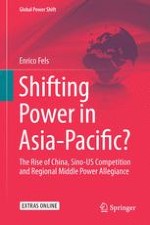2017 | OriginalPaper | Buchkapitel
4. Towards a Middle Power Theory in International Relations
verfasst von : Enrico Fels
Erschienen in: Shifting Power in Asia-Pacific?
Aktivieren Sie unsere intelligente Suche, um passende Fachinhalte oder Patente zu finden.
Wählen Sie Textabschnitte aus um mit Künstlicher Intelligenz passenden Patente zu finden. powered by
Markieren Sie Textabschnitte, um KI-gestützt weitere passende Inhalte zu finden. powered by
